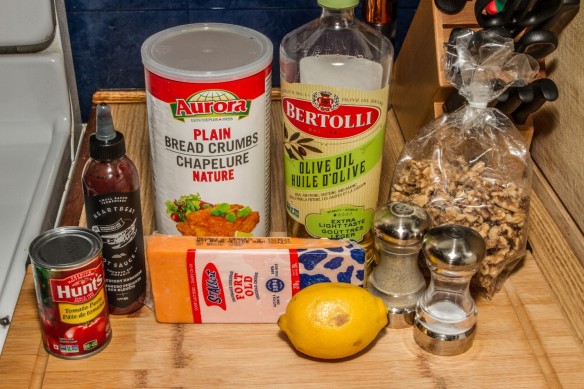In 1924, the Department of Agriculture published the booklet Mangeons du fromage canadien : Recettes et menus. It highlights the health, nutritional and economic benefits of cheese, particularly Quebec cheese. Evidently knowledge of the nutritional value of this food has changed a lot since then. At the time, the booklet stated: [Translation] “There is no meal where cheese has no comfortable place, and he who goes to work fortified by this nutritious food will accomplish, with the same zest, the same amount of work as if he had eaten a hearty meat-based meal.”
I found this book in our online Collection Search tool rather than in our Aurora catalog. I was hoping to find something a little more personalized, like a family recipe slipped into an archived letter! Then I discovered a record from the Department of Agriculture on the export of Canadian cheese. Lo and behold, it was hiding the booklet Mangeons du fromage : Recettes et menus in English and French.
![Cover page of a booklet with the inscription "Mangeons du fromage : Recettes et menus" [Translation: Cheese Recipes for Every Day].](https://thediscoverblog.files.wordpress.com/2024/03/image-1.jpg?w=584&h=863)
Cover page of the booklet Mangeons du fromage : Recettes et menus, [Cheese Recipes for Every Day] published in 1924 (OCLC 937533172). Image courtesy of the author, Ariane Gauthier.
This little book was tucked away in a pile of interviews, economic reports and photo envelopes about Canadian cheese from 1920 to 1924. It immediately piqued my curiosity.
But that did not stop me from reading the whole file. I learned that at the time, the dairy industry was quite unstable in Canada. Exports to Great Britain remained steady (especially for cheese) thanks to a particularly generous premium, but cheese consumption was declining. The British—our biggest buyers—no longer favoured this food as much, and neither did Canadians.
The Department of Agriculture and the producers were concerned: would Canada lose its place on the international market? In this context, Mangeons du fromage : Recettes et menus was born.
I went through the booklet looking for a recipe. My only criterion was to find something new, so I set my sights on a recipe for cheese and walnut loaf.
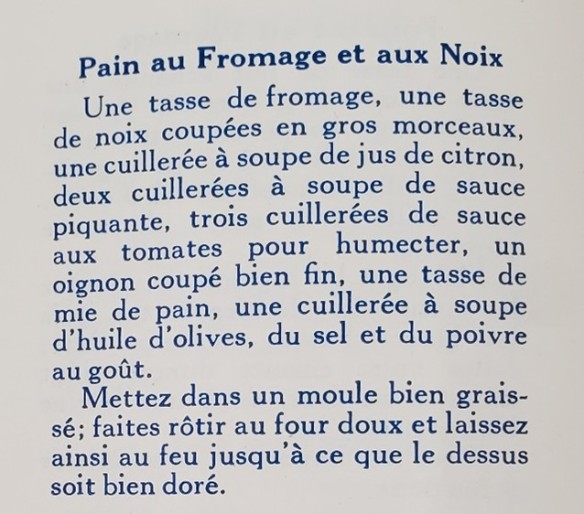
Photo of the cheese and walnut loaf recipe (OCLC 937533172). Image courtesy of the author, Ariane Gauthier.
Cheese and walnut loaf recipe [translation]
One cup of cheese, one cup of coarsely chopped walnuts, one tablespoon of lemon juice, two tablespoons of hot sauce, three tablespoons of tomato sauce to moisten, one finely chopped onion, one cup of crumb, one tablespoon of olive oil, salt and pepper to taste.
Place in a well-greased baking pan; roast on low heat and leave in the oven until the top is a perfect golden brown.
I began by gathering the ingredients, making sure to choose a Canadian cheese. I chose a local cheddar made near Ottawa.
The recipe called for one cup of crumb. This seemed odd to me, and I looked at the English booklet to compare. To my surprise, Cheese Recipes for Every Day featured completely different recipes. Not a single recipe for cheese and walnut loaf! To avoid wasting a good loaf, I chose to use ready-made breadcrumbs.
The first thing I noticed was the lack of instructions. The ingredients are listed, then it simply says to put everything in a well-greased pan and [translation] “roast on low heat.”
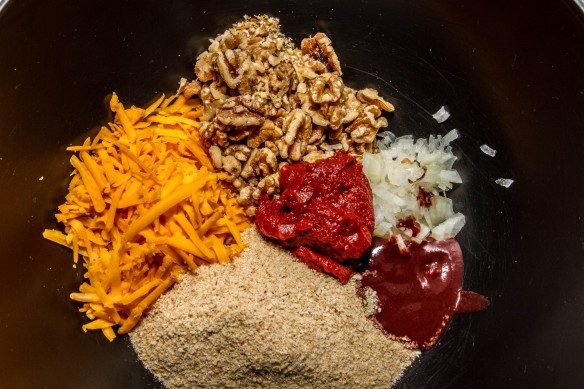
The ingredients in a bowl. The recipe does not say to mix them, but we can guess that this is the next step. Image courtesy of the author, Ariane Gauthier.
In short, the recipe seems to rely on the reader’s common sense, so I stirred the ingredients together. The result was quite dry, probably because of the breadcrumbs. I added a little water, but that did not help much. I stuck with it nonetheless, not daring to change the recipe too much.
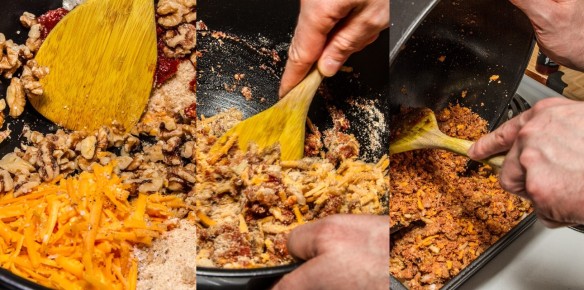
The ingredients are added and mixed. The result is more-or-less homogenous. Image courtesy of the author, Ariane Gauthier.
I then poured the mixture into a well-greased mould, which I had lined with parchment paper to make the unmoulding easier. Since no baking temperature was specified, I decided to put it in at 400oF and keep an eye on the loaf. After about 15 minutes, it had a nice colour and smelled toasty; I removed it from the oven. Here is the result:
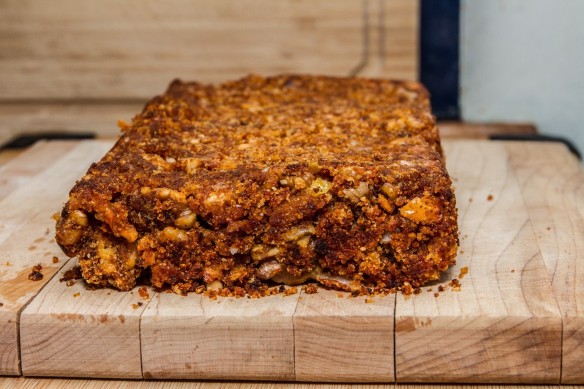
Cheese and walnut loaf from 1924, which barely stays together in one piece. Image courtesy of the author, Ariane Gauthier.
The loaf barely held together; it was obviously very dry. It did not survive the journey from my home to 395 Wellington Street, turning into a kind of crumble. Nevertheless, I think my colleagues appreciated the surprising taste, which I would compare to that of vegetarian spaghetti meatballs.
What do you think?
If I had to do it again, I would sacrifice a good loaf of bread to use its crumb; it would surely absorb the mixture better than the ready-made breadcrumbs. I would also use a local cheese with a higher moisture content.
If you try this recipe, please share pictures of your results with us using the hashtag #CookingWithLAC and tagging our social media: Facebook, Instagram, X (Twitter), YouTube, Flickr and LinkedIn.
Additional resources:
- In the same series, on Library and Archives Canada’s blog:
- A pumpkin pie from 1840 by Ariane Gauthier
- Cream puffs from 1898 by Ariane Gauthier
- Dutch Apple Cake from 1943 by Ariane Gauthier
- Twelve Days of Vintage Cooking, YouTube channel, Library and Archives Canada
- Sifting through LAC’s Cookbook Collection, podcast episode, Library and Archives Canada
Ariane Gauthier is a reference archivist with the Access and Services Branch at Library and Archives Canada.


